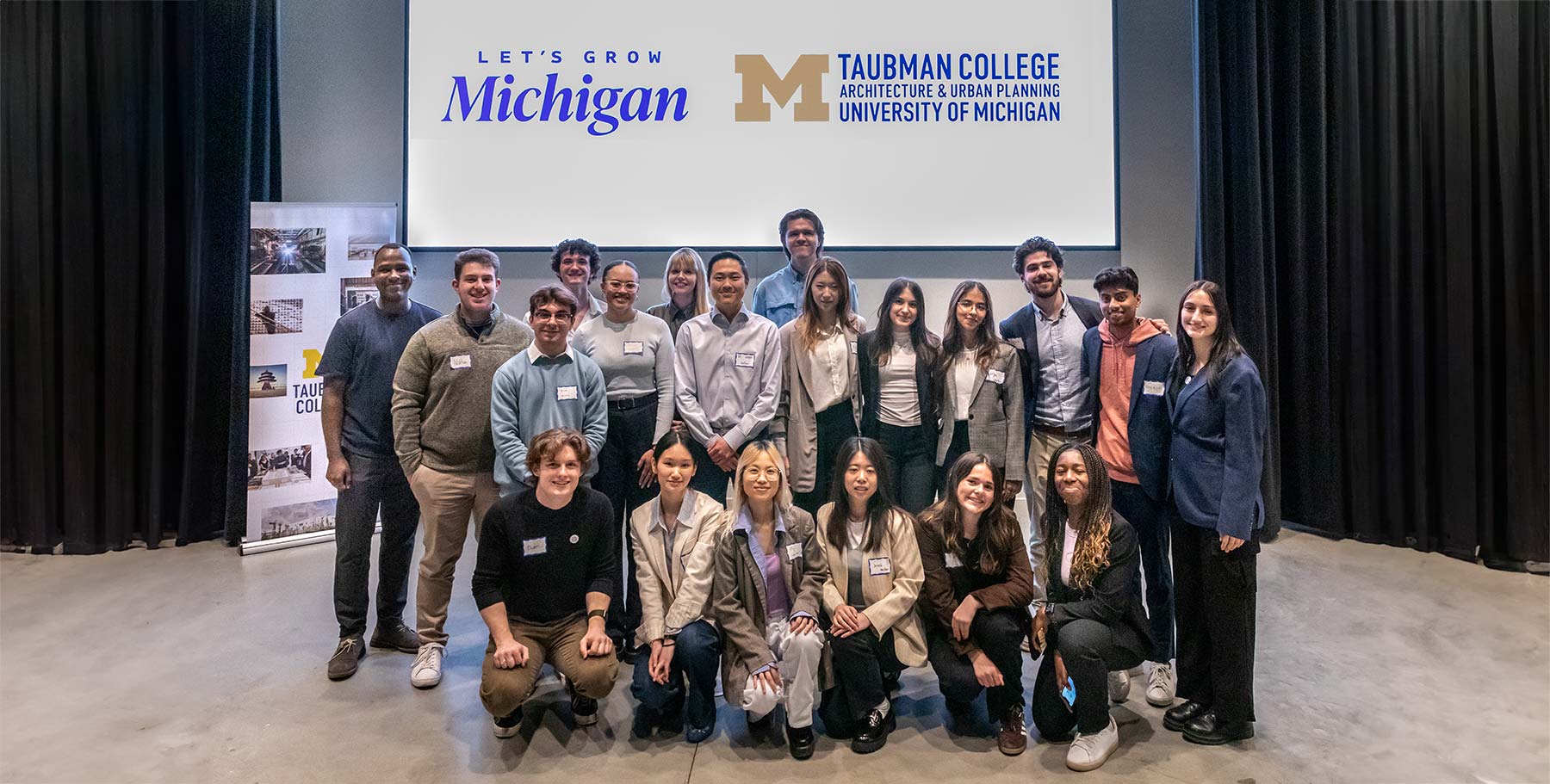Mankouche’s “Afterhouse” featured on Michigan Radio’s “The Next Idea”
Associate professor Steven Mankouche’s Afterhouse was featured in Michigan Public Radio’s “The Next Idea” series on Stateside. “The Next Idea” is Michigan Radio’s project devoted to new innovations and ideas that will change the state of Michigan. “Afterhouse” is an ongoing project which is transforming an abandoned house into a year-round greenhouse by Mankouche, his partner Abigail Murray, and their design collective, archolab.
The full article on Michigan Public Radio by Nick Wallace is below and can be found here along with images and full interview; http://michiganradio.org/post/transforming-blighted-home-detroit-subterranean-greenhouse
It wasn’t too long ago that the house located at 3347 Burnside St. in northeast Detroit was a true eyesore.
Long since abandoned, it had been damaged beyond repair by fire and vandalism. There were boards over the windows and spray-paint on the walls—all the telltale signs of the kind of blight that has afflicted neighborhoods throughout Detroit.
But stand in front of 3347 Burnside St. today and you’ll see something very different. Where once there was disuse and disrepair, now there’s… a greenhouse.
It’s called “Afterhouse.”
University of Michigan architect Steven Mankouche is one of the members of the architecture research collaborative who has been working on the project. He told us that the greenhouse is partially subterranean, sitting in the foundation of the old structure.
It was constructed with recycled materials, including many stripped by hand from the original home. Its transparent, polycarbonate roof, traps heat, and it relies on the earth to serve as a thermal battery, moderating summer highs and winter lows.
On a 20-degree January day, for instance, this design would keep temperatures inside the greenhouse above freezing.
“If it was sunny, it would actually be quite warm,” Mankouche told us. “I would expect it to be 40 to 50 degrees easily.”
The project offers a new way of dealing with the thousands of blighted homes that are spread throughout Detroit and other Michigan cities.
This should allow for the cultivation of crops like figs, pistachios, and pomegranates—plants that are more suited to a Mediterranean climate than the extreme hot and cold of southeast Michigan.
It isn’t just the prospect of fresh pomegranates during a Michigan winter that makes Afterhouse a novel idea, however. The project offers a new way of dealing with the thousands of blighted homes that are spread throughout Detroit and other Michigan cities.
The typical fate for such houses is a total demolition.
The walls are torn down, the foundation is removed, and the gap that remains is filled in with clean earth.
Since January 2014, more than ten thousand blighted homes in Detroit have been removed in this manner, with more demolitions planned for the future.
But while demolitions are quick and effective, they leave vacant lots which have at best a neutral effect on the surrounding neighborhood. Afterhouse, in contrast, has had positive spillovers throughout the surrounding community.
“[It] generates a lot of excitement to see something coming up, brand new construction being built in the neighborhood,” Mankouche said.





